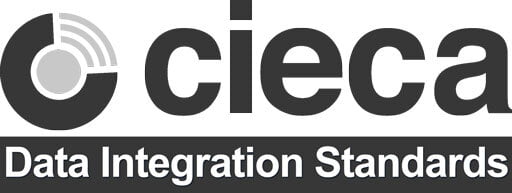Case Studies: CIECA’s AI and Referral Committees
CIECA’s primary mission is to develop and publish data standards for the collision industry. For the data standards to be effective, they must be meaningful to all collision industry segments and provide a common vocabulary for digital communication. To ensure that goal is achieved, CIECA’s Committees are comprised of members and volunteers from all industry segments. The committees work together through CIECA’s Standards Advisory Board to ensure that their work products are consistent.
With the creation of CIECA API Standards (CAPIS)—based on JSON APIs—many CIECA committees have been reactivated and/or established. These include artificial intelligence (AI), Electric Vehicles (EV), OEM Repair Procedures, Referral and Vehicle Damage & Imaging (VDI).
CIECA’s Architecture Committee, which consists of technical representatives from CIECA member companies, works closely with all committees to ensure new standards meet the guidelines and rules established over the years. Active members include Chairman Dan Webster from Enlyte; Board of Trustees member and past chair Phil Martinez from Mitchell; Andy Bober from Entegral; and Car-Part.com representatives Jeff Schroder, a member of the Board of Trustees and past chair, and Mike Hastings, a Board of Trustees alternate.
The current work being done in CIECA’s AI and Referral Committees are excellent examples of the committee process and how new standards are created. Committee volunteers meet regularly to discuss opportunities to create new CIECA API Standards based on industry needs.
Both committees were established in 2022. The AI committee was formed to discuss the impact of AI to the collision industry and determine if changes are needed to CIECA’s current messages and/or if new data standards need to be created.
Unlike some CIECA messages, the proposed AI message is relatively simple. It provides the means for a company to submit photographs to an AI service provider and receive back the output of the AI engine. The business purpose is to receive an AI-generated response, so it is not as complicated as other messages, such as Referral.
The Referral Committee has looked at ways to improve customer service in the inspection and repair process by developing and maintaining messaging standards aimed at automating vehicle referral activities.
The Referral message is similar to an assignment message; however, the assignment message is triggered by the billpayer, while the Referral message comes from other business partners who aren’t responsible for payment.
For example, in the past, the insurance company paying for the tow, rental, etc., typically sent the assignment to the business partner. Today, there are systems, such as telematics, that may trigger a tow or rental and are not responsible for paying these services.
The Referral message is expected to set some groundwork for CIECA’s new VDI Committee since many of the same elements will be used for the Estimate, Appointment and Authorization messages.
Steps to Create A New Data Standard
1) A CIECA Standards Committee, such as AI or Referral, creates data requirements for a new industry standard. They could include a new message or code list or any data that a new message needs.
2) The data requirements are forwarded to CIECA’s Architecture Committee for evaluation and the committee is considered to be in “maintenance mode.”
3) The Architecture Committee either approves the data or recommends changes.
4) If needed, a combined meeting is held with the Architecture Committee and standards committee to discuss the proposed changes.
5) The standards committee is reactivated to work on any suggested changes the Architecture Committee recommends.
6) After being approved by the Architecture Committee, the standard is put through a final review during a Quality Assurance meeting.
7) The standard is formally scheduled to be included in one of CIECA’s two standards releases, which are sent to members each year for implementation.
How CIECA Members Create New Standards
Across the industry, companies use CIECA Standards to exchange data. Although CIECA doesn’t facilitate the exchange of data, the organization provides the standards and documentation for member companies to build APIs with trading partners.
Typically, the process includes the following:
- Contacting the trading partner you want to work with.
- Joining CIECA and obtaining a license to use CIECA Standards.
- Reaching an agreement with your trading partner on which messages / APIs you will need to achieve your business objective.
- Building your APIs using the standards and documentation available to members on the CIECA website.
- Working with your trading partner to obtain any required permissions and/or credentials to access their APIs.
